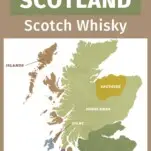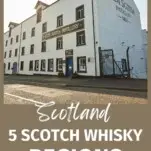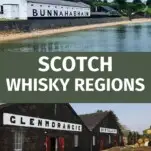Last Updated on December 2, 2025 by Leah Hall
This cheat sheet is a comprehensive list of the 5 Scotch regions of whisky in Scotland. We hope this helps to make sense of the distinctive flavors that Scotland brings to their whisky.
Since we are visiting Scotland for the first time, we wanted to share this cheat sheet all about the different Scotch regions that Scotland has. There are 5 main Scotch Regions (with an additional 6th) that we will talk about below. For this trip, we will be experiencing only 2: Speyside and Lowlands.
This post contains affiliate links for products that we think you as readers might find useful, and we make commission off of these! For more details about our affiliates, click our Disclosure and Contacts Page.
We plan on touring Lindores Abbey Distillery, Glenfiddich, and Holyrood Distilleries. Glenfiddich is in Speyside, and will be our longest trek to get to. Check out where we stayed on the way, Killiecrankie House!
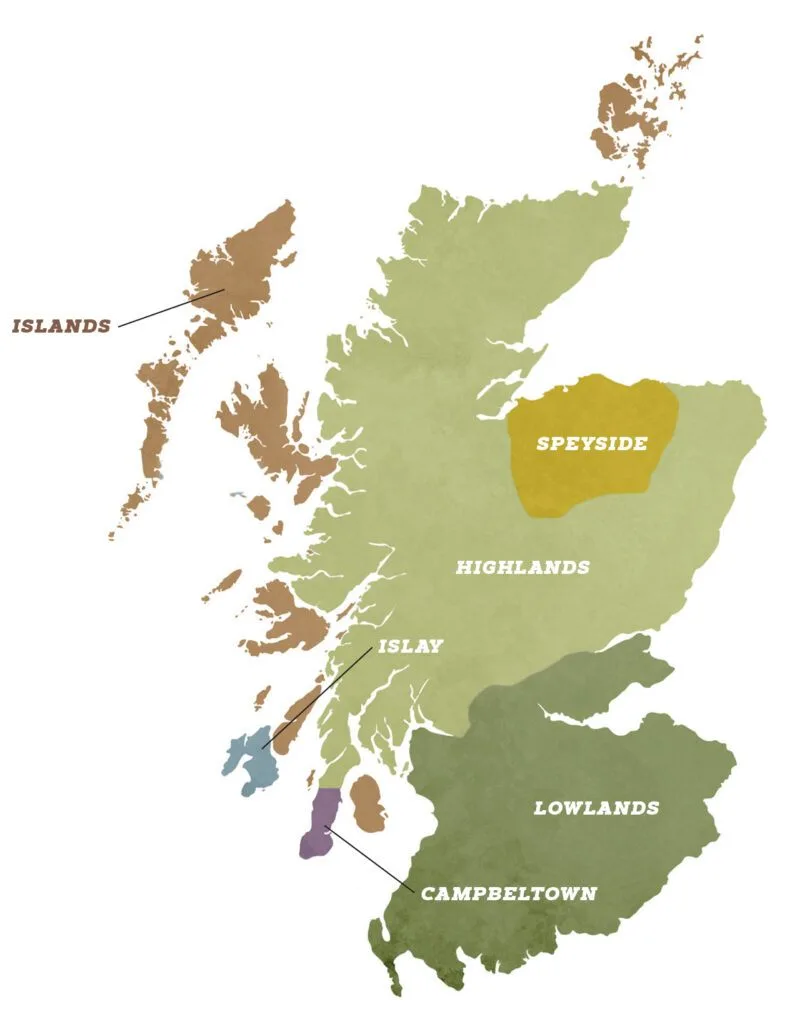
Map courtesy of Whisky Advocate
Why Learn about the Scotch Regions in Scotland?
There are more than 130 distilleries producing whisky in Scotland. They definitely do not all taste the same, the flavors and aromas of each whisky changes because of the whisky region where it is produced.
Even within a region, there can be different flavor profiles based on a micro-climate, and even how the whisky is aged. It has been said the different Scotland whisky regions are distinctive like terroirs are for vineyards.
Scotland is unique because it has a well established terroir concept. This is a characteristic known only to Scotland, and Scotland alone.
Scotch whisky is the most consumed whiskey on earth, and is seeing growth. It is easier to find even smaller brands at your local liquor store. It is worth noting that blended scotch remains the most popular version of whisky that is being consumed.
The Water Of Life
There is almost a mythology surrounding whisky. It’s a spirit that flows through the rivers that provide the water and the land that provides the barley for the production process. The word whisky is a version of the Gaelic word for “water of life.” There is a Scottish saying of today’s rain is tomorrow’s whisky!
What Is Scotch Whisky?
Scotch whisky is a liquor produced in Scotland. There are only three ingredients in Scotch: water, malted barley, and yeast. The process to make whisky includes fermentation, distillation, and maturation.
Fermentation is the process of turning something into alcohol. Distillation converts a liquid into a vapor, which is then turned back into a liquid. Maturation is where the scotch is aged. Scotch must be aged for at least three years in oak barrels. When a whisky refers to its age, that age refers to the youngest whisky in the barrel. Aged whisky tends to look darker, but the color can also depend on what kind of barrel is used to age the whisky.
Barrels are most commonly made from American oak and were previously used to make American bourbon. It is also common to see distillers using other types of barrels like sherry casks or even port wine casks, this can be called finishing, as this is usually done after the 3 year aging process in oak.
Whiskey with an “e” is whiskey produced outside of Scotland, including Ireland. Whiskey with an “e” can also refer to American whiskies. Scotch whisky is produced from malted barley.
Five (Six) Scotch Regions of Whisky
There are five Scotch Whisky regions – Campbeltown, Highland, Lowland, Islay and Speyside. Each Scotch region offers a different perspective on Whisky.
Scotch can be like wine in that the location of where it is produced makes a big difference to how it tastes, looks and smells even though it’s produced in the same country. Scotland isn’t large, but the differences in regions to Whisky taste are amazing.
Coastal distilleries will produce a whisky that is nothing like an inland whisky. A single malt from an island is different from Speyside. Even within regions, a whisky can be different.
Scottish whisky is known the world over, and it is important to note that every region has a whisky achiever found in bars around the world. Here’s how to distinguish the different Scotch regions below!
Speyside
Speyside is the most densely populated Whisky region in the world. Located in the northeast part of Scotland, it is famous for the River Spey. Speyside whiskies are known for being frugal with peat and full of fruit. Flavors of apple, pear, honey, nutmeg and vanilla all have a place in expressions from this region. They are also commonly matured in sherry casks. Speyside is a sub region to the neighboring Highlands region because of the density of distilleries in the region.
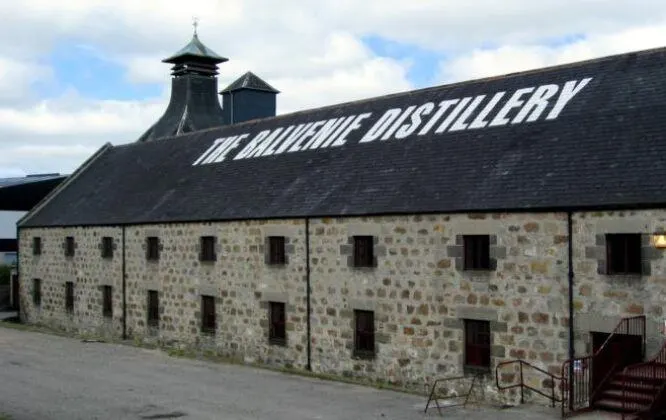
Photo courtesy of Visit Moray Speyside
Since the region straddles the river Spey as it flows from beginning to end, this region has the highest concentration of whisky distilleries anywhere on the planet— more than 50. Many of them have been in this rugged terrain for over a century. Now, known names such as The Balvenie, Dalwhinnie, The Glenlivet and The Macallan are all here. Glenfiddich is the world’s best selling single malt whisky.
The whiskies range from round, sweet sips to hearty, earthy drams. Speyside is famous for sweet single malts with either very little or no peat. Because of this, Speyside seems to be an excellent starting point for those beginning their Whisky discovery. Below is a Macallan 12 Year.
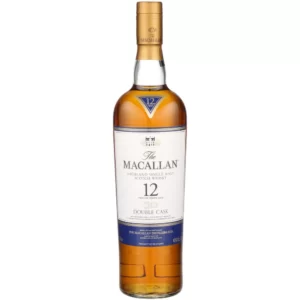
It’s known to be a huge whisky community. Distillery workers and tour guides are at the local pub having pints or drams together in the evening no matter where they work. The residents seemingly work for the region and category of single malt Scotch whisky and not just their particular distillery.
There are over 60 distilleries in the Speyside region. These more than 60 distilleries make more than 60% of Scotland’s whole single malt production. Technically Speyside is a subregion of the Highlands. Distilleries in Speyside can use either term on their labels.
Lowlands
The line between Lowlands and Highlands was originally delineated in 1784, as a matter of taxation rather than whisky style. The passage of the Wash Act, Lowland distilleries then paid duty according to gallons produced. As a result, malt facilities never grew here as they did further north. But what did develop was a gentler whisky, mostly non-peated and almost all characterized as light bodied. Lowlands are home to some of the oldest distilleries in Scotland, it’s the only place with a dedication to the triple-distilled method more common in Ireland.
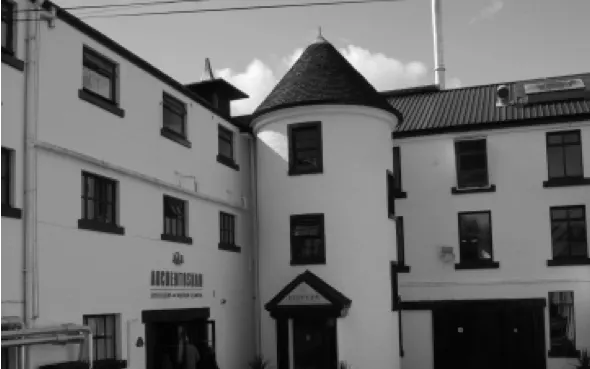
Photo courtesy of Auchentoshan
Some of the most famous Lowlands whisky are Glenkinchie and Auchentoshan. There are around 5 distilleries in this area. Flavors predominant in this are are grass, cream, toast, cinnamon and toffee. We toured Lindores Abbey Distillery in Fife, which is considered Lowlands, but it is on the border of the highlands, too!
Lowlands is the second biggest whisky region in terms of area, but only has around five distilleries. The Lowlands region covers the south of Scotland up to the north of Glasgow and Edinburgh. It meets the border of the Highlands. Anything south of this to the border with England is classified as the ‘Lowlands’ in whisky terms. Known as “The Lowland Ladies” for fruity and floral flavors, they were originally popular with English people– who are often considered by the Scots to be best suited to “ladies’ drinks”. We say drink what you like!
Lowlands whiskies tend to be light with no peatiness; they used to all be triple distilled. Only Auchentoshan uses this technique now. Lowland Whiskies are a great entry into malt whisky.
Highlands
This region, which also takes in the islands, (more on that below) has a huge diversity of flavors! It goes from lighter whiskies all the way to salty coastal malts. The Highlands offer interesting Scotch whisky flavors for all tastes.
The Highlands are the biggest area by mileage. This area goes from Glasgow in the south to western seashores to northern meadows and mountains. It excludes the northern region of Speyside, but goes around it.
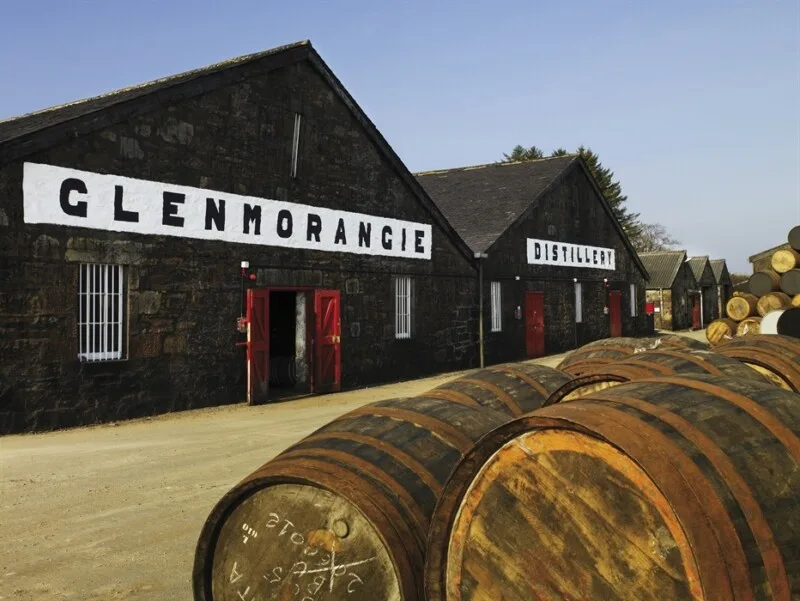
Photo courtesy of Visit Scotland
The whisky is just as varied. This includes rich and peaty options, as well as lighter and sweeter whiskies. Flavors can have dark fruitcake and tobacco spice from sherry casks. Malts can be rich and full bodied and fruity with a dry palate in the heart of the highlands, and from the coast can be dried fruit with a hint of smoke and sea salt.
Some of the most famous Highlands whiskies are: Glenmorangie, Dalmore and Aberfeldy. There are over 25 distilleries in this region.
Because of the size of this region, and the whisky being more varied, it’s easier to separate the Highlands into four sub-regions: north, east, south and west. Each of these sub-regions has its own style.
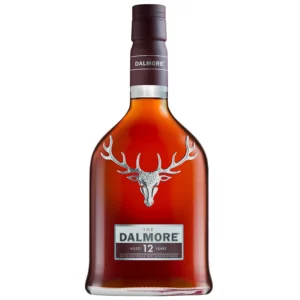
In the north you will find full bodied single malts, sweet and richer: Dalmore and Glenmorangie being most known. Lighter and fruit forward whisky is more common in the east, like Glendronach. Similar in the south, with less body, like Aberfeldy. The western Highlands have full body and peat forward, with the coast having an influence.
Campbeltown
Campbeltown whiskies are varied and full of flavor. Flavors of salt, smoke, toffee, fruit, and vanilla abound. Campbeltown was once the Victorian Whisky Capitol of the world, but now only has 3 working distilleries. This is a remote seaside area of Scotland.
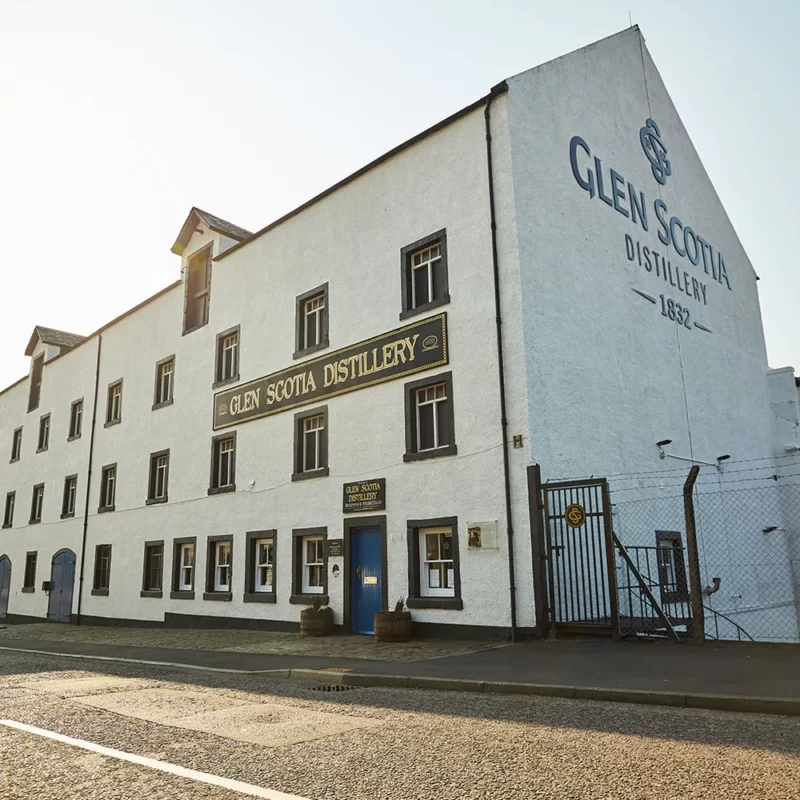
Photo Courtesy of Glen Scotia
Springbank is the last operation in Scotland to do all of its own floor maltings. Glen Scotia (check out our blog post about Glen Scotia) has been under the same roof since 1832, and their Victoriana has flavors of dark chocolate, lemon and grapefruit zest over charred oak and smoke. Campbeltown whisky has a bit of salinity in a lighter body with some caramel notes, which the difference between Islay and Speyside. It has an lasting individuality as the only town to be recognized as an entire scotch region.
Enthusiasts also praise the area’s distinctive (and, unless you like it, a bit off putting) flavor of wet dog, also called wet wool.
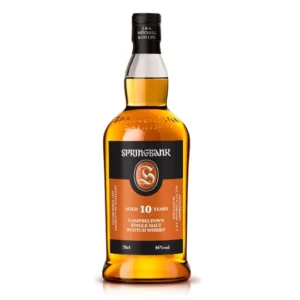
Campbeltown has 3 distilleries. It was once a hotspot with over 34 distilleries. Their flavors teem with brine, smoke, vanilla and dried fruit. They are known for their dryness and sometimes pungent flavor because of the location. But even the distilleries have different flavors. Springbank is robust and smoky, Glen Gyle is peaty and fruity, Glen Scotia is lighter with grass notes.
Isle of Islay
The Island of Islay (pronounced ‘eye-lah’) is an island where the majority of the population are involved in whisky production. This island is on the west side of Scotland. They are famous for heavily peated whiskies.
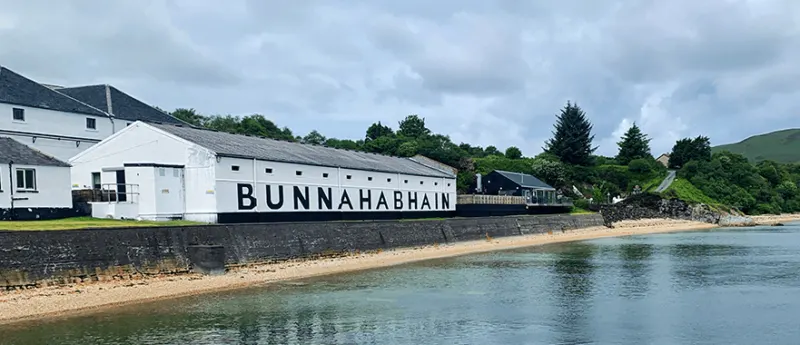
Photo courtesy of Bunnahabhain
Nicknamed “Whisky Island,” Islay is a rocky peat bog, and peat is traditionally used to kiln dry the malt. The peat gives an iodine-like quality in bottles of Ardbeg, Lagavulin and Laphroaig. And those are just three of the nine working distilleries on the island. The other six have less of a peat bomb and more subtleties.
These include Bowmore, Bruichladdich and Bunnahabhain. But even in these you can detect a bit of campfire flavor. It is a distinctive element that people avoid Scotch altogether because of fear that they are “too smoky”. Find some Bowmore here!
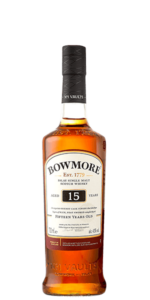
They can have flavors of fruit and peat: burnt and sweet, smoke, brine and seaweed, even some with Oloroso sherry finishings. This island has a distinct flavor profile. It is believed that whisky distillation reached Scotland from Ireland via Islay in the 13th century, which explains the high number of past and present distilleries on the island.
Bonus #6 of the Scotch Regions: Islands
There are only supposed to be five whisky regions in Scotland (as per the Scotch Whisky Association). Officially, the Islands are seen as a sub-region of the Highlands.
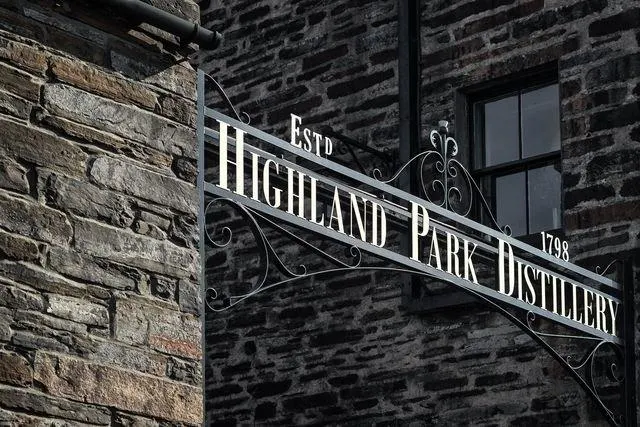
These islands comprise a number of separate islands surrounding mainland Scotland. Even more specifically, if any of Scotland’s 800 islands produce whisky and don’t have the name of Islay, then they are considered part of the Islands whisky region.
Obviously, there’s a fair amount of diversity between all the Islands distilleries. However, there is some consistency of salinity and peat, making these whiskies somewhat similar to Islay single malts. Other flavors can be herbal, citrus, and nutty.
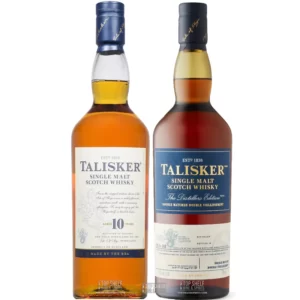
Islands distilleries like Talisker and Highland Park are very popular. Great sea inspired whisky like Talisker.
Scotch Whisky
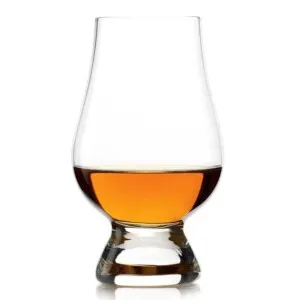
How to Taste Whisky
- Glassware – optimally a Glencairn style glass is used. A wine glass or rocks glass will work, but not as effective for nosing. The shape of the glass will make the experience better as you can identify aromas and see the viscosity of the whisky. Viscosity simply means how thick and sticky the whisky is. Before you breathe it in, notice the color of the whisky and how long it takes to drip. If it takes long to drip, then it is more viscous. A short time, then less viscous.
- Pour – pour whisky into the glass just under the widest part of the tulip shape. This allows you to swirl the whisky, and bring out the different scents. This will also help to avoid splashing and see the viscosity.
- Swirl – swirling the whisky in the glass opens up the scent. Hold the whisky up to the light to see the color. Is it gold or dark brown? This can give you an idea of how long the whisky was aged. The longer the whisky is aged, the darker it will be.
- Nose – Nosing means to smell the whisky. Nose it as deeply or lightly as you wish. Don’t look for a single scent. This will help to notice different scents every smell you take. The aromas will change the more you nose. The heavier aromas, (earth, smoke, woody), will be at the bottom of the glass while the lighter aromas (Spice, malt, fruit and floral) will be higher in the glass. You can alternate between long and short whiffs as you please.
- Sip – Now take a small sip and slowly roll it on your tongue. Before you swallow, let the whisky sit on your tongue. Just like in nosing the whisky, make sure you are not looking for a particular flavor, but let the flavor come to you. Give your palate a chance to adjust to the alcohol levels, then take another sip. When you feel like you’ve appreciated the whisky, swallow. You can also do a technique known as “The Kentucky Chew,” attributed to the late Booker Noe, and popularized by Jim Beam Master Distiller Fred Noe. Yes, this is an American technique, but we have found it works over all different spirits. The technique is to roll the whisky around in the mouth and “chew” on it, this allows the spirit to reach all the surfaces of the mouth, all of which pick up different flavors. It’s fun, but kind of noisy, so optional.
- Identify – Figure out the aroma and flavors you found. Does it burn on the way down? That is the finish. When observing this, ask, “does it burn for a long time?” or is it short? Is it pleasant, or rough? These are all great descriptors and take note. This is how you can refine your pallet and identify what you like in a whisky. You can write down the flavors of what you like, and this will help you see a pattern in whiskys (or other liquors) you taste, and you will be able to figure out what you look for and like.
- Options – You can add room temperature water, or ice. Ice mutes the flavors slightly. Water can also help identify the flavors on the palate if the whisky feels intense or overpowering. These are both ways to help learn about whisky, too. Then repeat the tasting of whisky. This is also a great way of learning which Scotch regions you like.
Tips & Tricks
- Visit Scotland – I mean, obviously the best place to enjoy Scotch whisky is the very land where it was born. We hope the above information makes your Scotch whisky even more enjoyable while in Scotland.
- Whisky – find the whisky that you like and then branch out into other Scotch regions and see what you like there. You don’t have to like them all, or even most, but find the flavors you do like.
- Glass – Get a Glencairn Glass if you are going to get serious about your whisky tasting.
- Age of Whisky – Older may not equal better. It’s all a matter of taste. A younger Scotch may taste fruity, with vanilla. An older scotch may be more complex with caramel. The longer a scotch is aged, the more it will pick up flavor from the oak cask. The color of Scotch is also determined by the cask, i.e. a light scotch more likely aged in an ex-bourbon cask, a darker scotch has more likely been aged in an ex-sherry cask. Color is also from being dry smoked (usually peat, which also adds to the scotch having a distinctive smoky flavor).
Scotch Cocktails
There are purists that think Scotch whisky shouldn’t be in a cocktail. We decidedly disagree. While whisky is lovely on its’ own, we love the flavors in cocktails, too. Here are some to get you started!
- Tartan
- Peaty Pera
- Blood and Sand
- The Black Scot
- Professor’s Poisoned Apple
- Ginger Snap
- Nightmare on Whisky Street
Cheers!
Also, don’t forget to follow us on Instagram and tag #gastronomcocktails so we can see all the wonderful recipes YOU recreate from this site!
You can also subscribe to our weekly newsletter so you never miss a delicious recipe again!
Like this post? Check these out below, too!
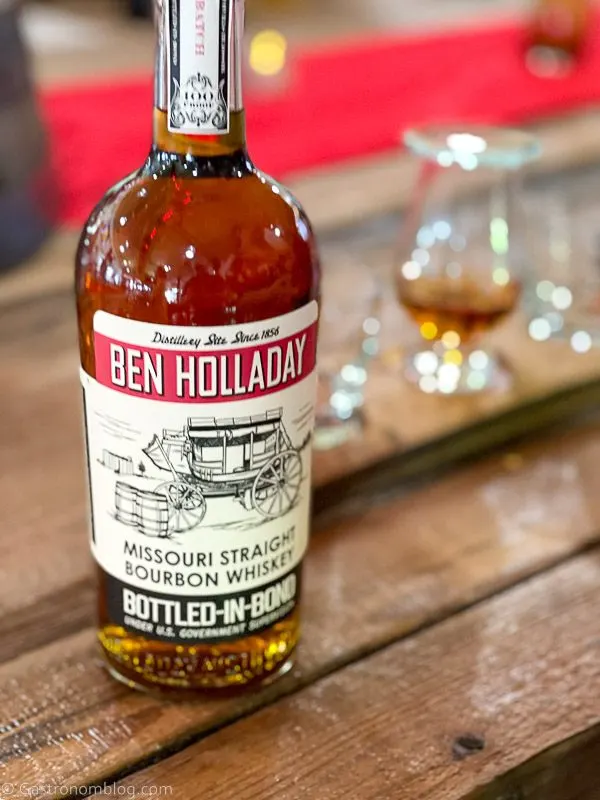 Holladay Distilling – Weston, Missouri
Holladay Distilling – Weston, Missouri
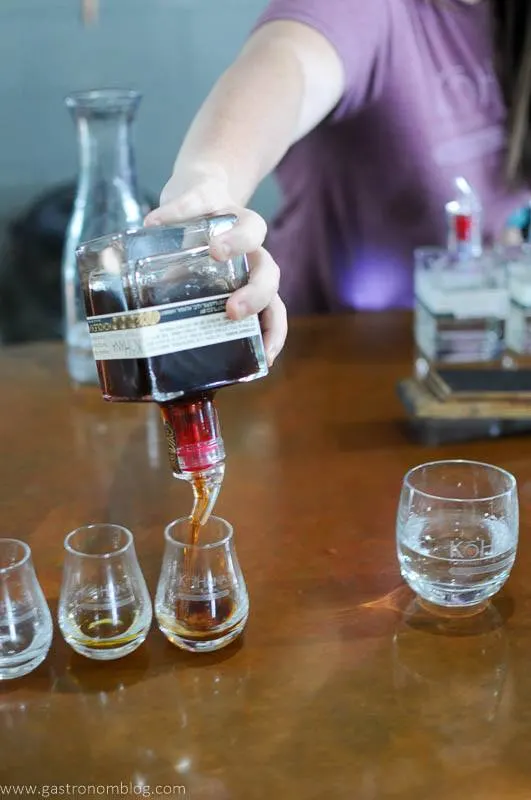 KoHana Rum Distillery – Hawaii
KoHana Rum Distillery – Hawaii
Interested in stocking your own home bar? Make sure to see our favorites at our Amazon Store!
If you liked this post, don’t forget to subscribe for new (and of course free) recipes by entering your email address on the side bar (and get all the recipes delivered to your inbox when we post), so you don’t miss out on a thing. You can find us on Facebook, Instagram, and Pinterest!
Gastronomblog is a participant in the Amazon Services LLC Associates Program, an affiliate advertising program designed to provide a means for sites to earn advertising fees by advertising and linking to amazon.com

